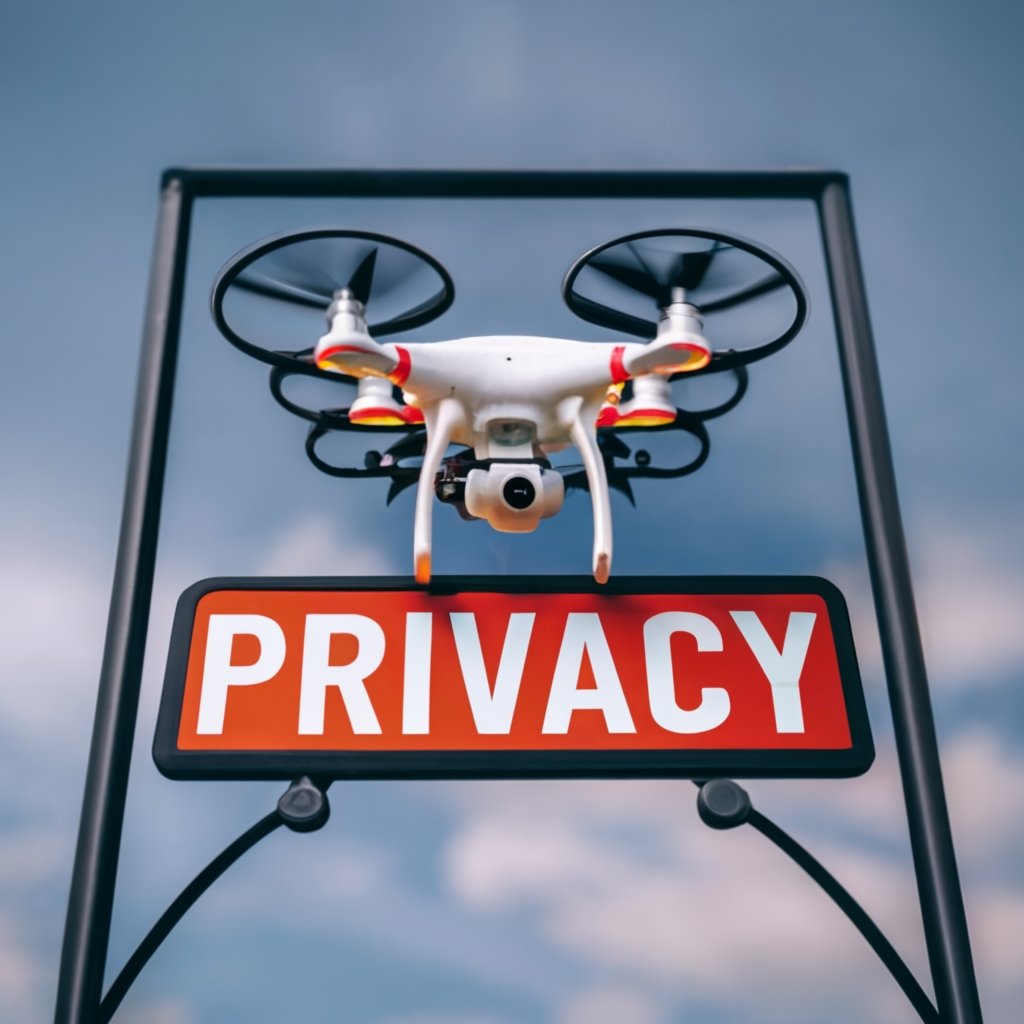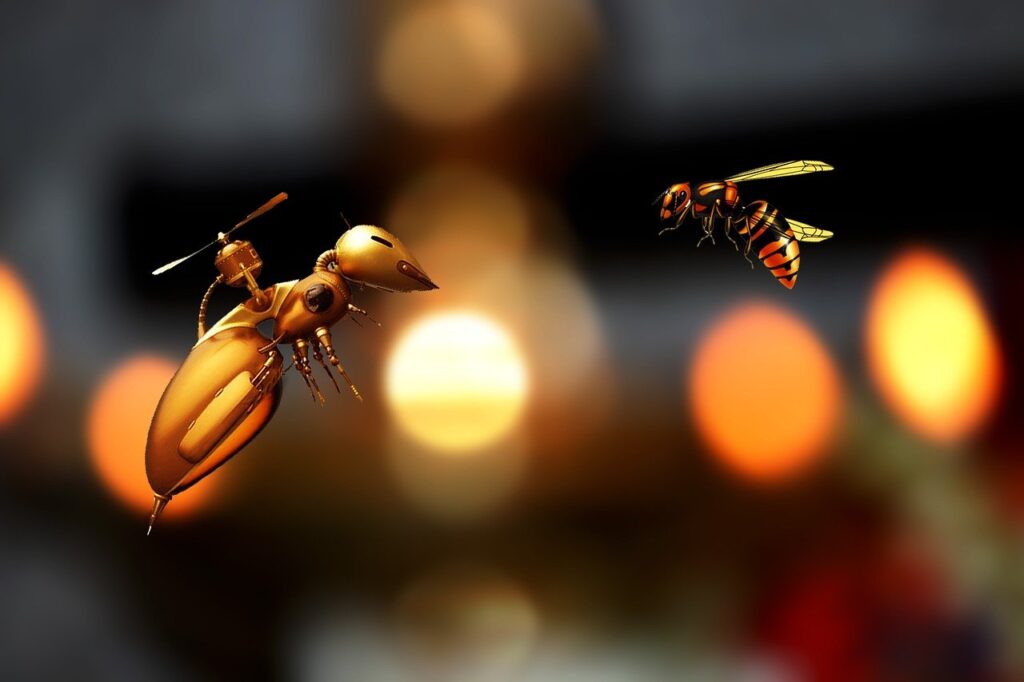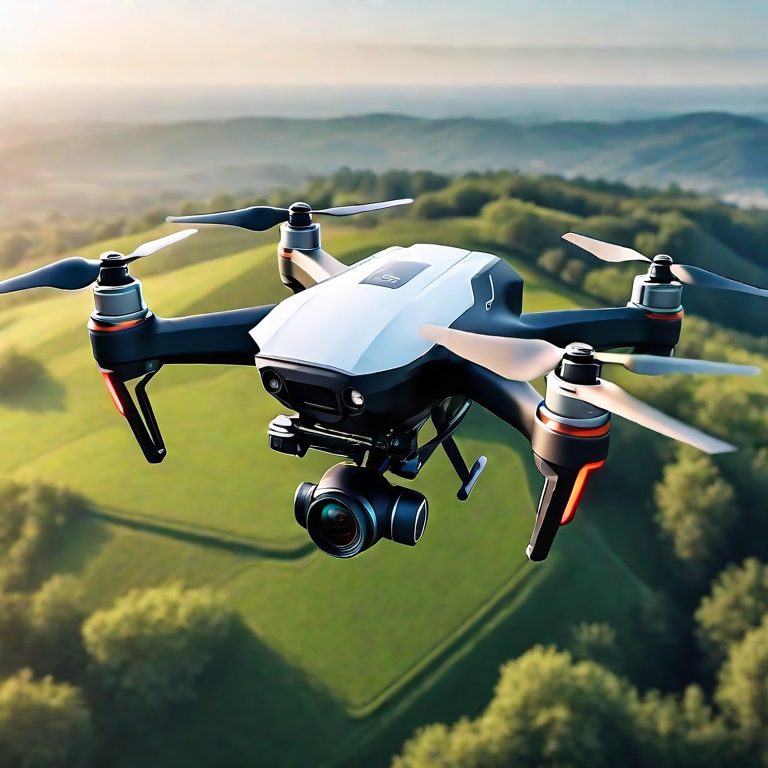Have you ever wondered how drones have become such an integral part of our daily lives? From capturing breathtaking aerial photographs to delivering packages straight to our doorstep, these unmanned aircraft have revolutionized multiple industries. Whether you’re a photography enthusiast, a farmer, or simply amazed by the endless possibilities drones offer, this article delves into the various ways drones impact our lives. Brace yourself for a captivating journey as we explore how these high-flying machines have changed the way we see the world.

Environmental Impact
Improved monitoring and conservation
Drones have revolutionized monitoring and conservation efforts by providing a bird’s eye view of our environment. With the ability to fly to locations that are difficult for humans to access, drones enable researchers and conservationists to gather valuable data on ecosystems, wildlife, and natural resources. This data can be used to monitor and protect vulnerable areas, track changes in biodiversity, and identify potential threats. By helping us better understand and preserve the Earth’s natural environments, drones are playing a crucial role in safeguarding our planet for future generations.
Efficient delivery services
Drones have emerged as a game-changer in the world of delivery services. With their ability to swiftly navigate through traffic and deliver packages directly to customers, drones offer a faster and more efficient alternative to traditional delivery methods. They can bypass congested roads and deliver items in a fraction of the time it would take for a human to do the same task. This not only improves customer satisfaction but also reduces the carbon emissions associated with conventional delivery vehicles. By harnessing the power of drones, businesses can optimize their delivery processes and contribute to a greener and more sustainable future.
Reduced air pollution
One of the most significant environmental benefits of drones is their contribution to reducing air pollution. Traditional methods of transportation, such as helicopters or airplanes, generate substantial greenhouse gas emissions, contributing to global warming and air pollution. In contrast, drones have a much smaller carbon footprint since they run on electric power. By utilizing drones for tasks such as aerial surveys, photography, or surveillance, we can significantly reduce the amount of air pollution produced. This shift towards cleaner technology is an important step in mitigating the adverse effects of climate change and improving air quality for all.
Enhancing Public Safety
Surveillance and crime prevention
Drones have become indispensable tools in enhancing public safety and law enforcement. With their ability to capture real-time aerial footage, drones provide law enforcement agencies with a valuable asset for surveillance and crime prevention. They can monitor large areas, track suspects, and respond to emergencies more effectively. By using drones, law enforcement can reduce the risks associated with dangerous situations and gather crucial evidence to aid in investigations. This enhanced surveillance capability not only deters crime but also helps ensure the safety and security of communities.
Disaster response and rescue operations
In times of natural disasters or emergencies, drones play a crucial role in disaster response and rescue operations. Their ability to quickly assess damage, locate survivors, and deliver supplies to affected areas can save lives and provide critical support to rescue teams on the ground. Drones equipped with thermal imaging cameras can detect heat signatures, helping rescuers identify individuals trapped under debris or in remote areas. The agility and versatility of drones make them indispensable tools in disaster management, enabling faster and more effective responses to emergencies.
Traffic management
Traffic congestion is a growing issue in urban areas worldwide, resulting in wasted time, increased air pollution, and frustration for commuters. Drones have the potential to revolutionize traffic management by providing real-time data on traffic conditions, identifying congested areas, and helping authorities optimize traffic flow. By monitoring traffic from the air, drones can detect accidents or road closures, allowing for quicker response times and alternative route recommendations. This proactive approach to traffic management can significantly reduce congestion, improve road safety, and enhance the efficiency of transportation systems.
Revolutionizing Industries
Agriculture and crop monitoring
The agricultural industry is being transformed by the integration of drones. Drones equipped with advanced sensors and cameras can survey large farming areas, providing farmers with invaluable insights into crop health, irrigation needs, and pest infestation detection. This real-time data allows farmers to make informed decisions regarding fertilization, pesticide application, and water management, leading to higher crop yields and reduced environmental impact. Drones are revolutionizing the way we cultivate and harvest our food, making agriculture more sustainable and efficient.
Film and photography industry
In the film and photography industry, drones have opened up a whole new world of creative possibilities. With their ability to capture stunning aerial shots, drones have become an essential tool for filmmakers and photographers. They offer unique perspectives and angles that were previously only possible with expensive equipment or helicopters. Drones provide filmmakers with a cost-effective way to capture breathtaking shots, resulting in visually stunning and immersive storytelling. Whether it’s a sweeping landscape shot or a dynamic chase sequence, drones have become an invaluable tool for artistic expression in the film and photography industry.
Infrastructure inspection and maintenance
Inspecting and maintaining large infrastructure, such as bridges or power lines, can be a challenging and time-consuming task. Drones are revolutionizing this process by offering a safer, more efficient, and cost-effective solution. Equipped with high-resolution cameras and thermal imaging technology, drones can perform detailed inspections of infrastructure, identifying potential damage or areas in need of maintenance. This data helps engineers and maintenance crews make informed decisions and prioritize repairs, all while minimizing the need for human intervention in hazardous environments. By using drones for infrastructure inspection and maintenance, we improve safety, save resources, and increase efficiency.
Advancing Healthcare
Medical supply delivery
In remote or hard-to-reach areas, delivering medical supplies in a timely manner can be a matter of life or death. Drones offer a potential solution to this challenge by providing rapid and efficient transportation of medical supplies. From delivering vaccines and medications to transporting blood samples for analysis, drones can significantly improve access to healthcare in underserved communities or during emergencies. With their ability to bypass traditional transportation infrastructure, drones can reach remote locations faster and more reliably, ensuring critical supplies are delivered when and where they are needed most.
Remote healthcare services
The rise of telemedicine has been augmented by the integration of drones into healthcare services. Drones equipped with telecommunication devices can provide remote consultations and medical assistance to patients in areas with limited access to healthcare facilities or specialized doctors. Whether it’s monitoring vital signs, transmitting medical images for diagnosis, or delivering personalized healthcare guidance, drones enable healthcare professionals to reach patients who would otherwise face significant barriers to medical care. Drones are revolutionizing healthcare by bridging the gap between patients and healthcare providers, ensuring quality care regardless of geographical location.
Emergency response and patient transport
During emergencies or natural disasters, access to healthcare and the swift transport of patients become critical. Drones have the potential to revolutionize emergency response by providing rapid medical assistance and transport. Equipped with first-aid kits or even automated external defibrillators (AEDs), drones can provide on-site medical support to victims while waiting for paramedics to arrive. Additionally, drones can be used to transport medical supplies or organs for transplant, reducing delivery times and increasing the chances of successful procedures. Drones not only improve the efficiency of emergency response but also save lives by providing timely and life-saving medical interventions.

Privacy sign
Implications for Privacy and Security
Potential invasion of privacy
As drone usage becomes more prevalent, concerns regarding privacy infringement have been raised. Drones equipped with cameras can capture images or videos of people or private property without consent, potentially invading individuals’ privacy. This has sparked debates regarding the appropriate regulations and legal frameworks to balance the benefits of drone technology with protecting individuals’ rights to privacy. Striking the right balance is crucial to ensure that drones are used responsibly and ethically, respecting the privacy of individuals and communities.
Hacking and cyber threats
With the integration of technology, drones, like any connected device, can be vulnerable to hacking or cyber threats. Unauthorized access to drone systems or interference with their control can pose significant security risks. If a malicious actor gains control of a drone, it can potentially be used for illegal activities or to collect sensitive information. Ensuring robust cybersecurity measures, such as encryption and secure communication protocols, is essential to protect against these threats and maintain the integrity of drone operations.
Regulating drone usage
To address privacy concerns and security threats, it becomes crucial to establish clear regulations and guidelines for drone usage. Governments and regulatory bodies are working towards defining rules that govern drone operations, including flight restrictions, registration requirements, and privacy safeguards. Striking a balance between enabling innovation and ensuring public safety is vital. By implementing responsible regulations, we can harness the benefits of drone technology while mitigating potential risks, ensuring safe and ethical drone operations.
Impact on Military and Warfare
Surveillance and reconnaissance
Drones have revolutionized surveillance and reconnaissance capabilities for military forces worldwide. Equipped with high-resolution cameras and advanced sensors, military drones can provide real-time, actionable intelligence on enemy movements, battlefield conditions, or potential threats. This enhanced situational awareness allows military personnel to make informed decisions and respond effectively to changing scenarios. Drones offer a safer and more cost-effective alternative to traditional manned aircraft, reducing the risks faced by military personnel while gathering crucial intelligence.
Combat drones and autonomous weapons
The use of combat drones and autonomous weapons is a controversial topic with both ethical and legal implications. Combat drones can be equipped with weapons and used to carry out strikes against enemy targets, reducing the risk to human soldiers. However, concerns arise regarding the potential for autonomous drones and weapons to operate without human intervention, raising questions about accountability and the ethics of using machines for lethal purposes. Striking a balance between technological advancement and maintaining human control and accountability is crucial in shaping the future of military use of drones.
Ethical and legal concerns
The increased use of drones in military operations raises ethical and legal concerns that need to be carefully addressed. Questions of civilian casualties, collateral damage, and the adherence to international laws are paramount. While drones have the potential to reduce harm to military personnel, there is a need to ensure that their usage aligns with principles of proportionality, distinction, and adherence to international laws of war. Robust ethical frameworks and continuous monitoring are essential to ensure that military drones are used responsibly and in line with international humanitarian law.

Social and Cultural Influence
Changing perspectives on technology
Drones have the power to change how society perceives and interacts with technology. As drones become more prevalent and integrated into various aspects of our lives, individuals are being exposed to the possibilities and capabilities of this technology. This exposure can foster curiosity, interest, and a desire to learn more about emerging technologies. Drones are reshaping societal expectations and contributing to a culture that embraces innovation and technological advancements.
Drone racing and recreational use
Drone racing has emerged as a popular recreational activity, capturing the interest of enthusiasts worldwide. With their agility and speed, drones can navigate racecourses at high velocities, providing an adrenaline-filled experience for pilots and spectators alike. This emerging sport has cultivated a vibrant community of drone racing enthusiasts, contributing to the growth of recreational drone usage overall. Drone racing not only serves as a recreational pastime but also promotes technical proficiency and innovation among participants.
Artistic and creative applications
Drones have become an invaluable tool for artists and creatives to explore new frontiers in artistic expression. With their ability to capture unique photographs and videos from aerial perspectives, drones have unlocked a realm of creativity previously limited to expensive equipment or specialized techniques. From capturing breathtaking landscapes to creating intricate light paintings, drones have facilitated the fusion of technology and art in ways previously unimaginable. By granting artists new tools and perspectives, drones have broadened the possibilities of artistic creation and enriched the cultural landscape.
Job Creation and Economic Growth
Opportunities in drone development and production
The rapid growth of the drone industry has created numerous job opportunities in drone development and production. As the technology evolves, skilled professionals are needed to design and manufacture drones with improved capabilities, efficiency, and safety. From engineers and technicians to software developers and data analysts, the drone industry offers a diverse range of career paths. By fostering innovation and providing employment opportunities, the drone industry contributes to economic growth and increased job opportunities.
Drone-related services and industries
The adoption of drones has spurred the growth of a wide range of drone-related services and industries. From drone piloting and aerial photography to drone repair and maintenance, businesses have emerged to cater to the demands of this expanding market. Additionally, industries such as insurance, agriculture, or construction have integrated drones into their operations, creating new revenue streams and driving efficiency. The emergence of drone-related services and industries not only stimulates economic growth but also fosters innovation and technological advancements across sectors.
E-commerce and delivery sector impact
The e-commerce and delivery sectors have seen a significant impact from the integration of drone technology. Drones offer a faster, more efficient, and cost-effective solution for last-mile delivery, reducing delivery times and costs for businesses. By leveraging drones for delivery services, e-commerce platforms and brick-and-mortar retailers can provide customers with expedited delivery options, enhancing customer satisfaction and driving sales. The drone delivery sector is poised for substantial growth, presenting countless opportunities for businesses and entrepreneurs to tap into the evolving landscape of e-commerce.

Challenges and Limitations
Limited battery life and range
One of the main challenges facing drone technology is the limited battery life and range of drones. Most drones can only endure short flights before needing to return for recharging, limiting their operational efficiency and range. As drone technology continues to evolve, there is a need for advancements in battery technology and energy efficiency to overcome this limitation. Extending the battery life and range of drones would enable longer flights, allowing for more extensive data collection and diverse applications.
Integration with airspace regulations
Integrating drones into existing airspace regulations presents a significant challenge due to safety concerns and potential conflicts with manned aircraft. Drone operators must navigate complex regulations and obtain appropriate certifications and permits to ensure safe and lawful operations. Maintaining a balance between enabling innovation and ensuring airspace safety is essential to foster the responsible integration of drones into airspace systems. Collaboration between drone operators, regulators, and aviation authorities is crucial to establishing standardized regulations that accommodate the growth of the drone industry while ensuring public safety.
Public acceptance and perception
Despite the numerous benefits offered by drones, public perception and acceptance of this technology can be a challenge. Concerns surrounding privacy invasion, noise pollution, and public safety have raised skepticism and resistance towards drones. To foster public acceptance and mitigate negative perceptions, education and awareness campaigns are needed to highlight the positive impact of drones on various industries and address any misconceptions. Demonstrating responsible and ethical drone usage while actively engaging with communities can help build trust and acceptance of drones as beneficial tools.
Future Possibilities and Innovations
Drone swarm technology
The concept of drone swarms, where multiple drones operate in a coordinated and autonomous manner, holds tremendous potential for various applications. Drone swarms can be used for tasks such as search and rescue missions, surveillance operations, or even forming temporary communication networks in remote areas. By leveraging collective intelligence and cooperation, drone swarms can accomplish complex tasks more efficiently and effectively. Further advancements in swarm technology, including improved communication and decentralized decision-making capabilities, can unlock new possibilities and revolutionize the way drones are used in various industries.
Urban air mobility
The emergence of urban air mobility envisions a future where drones and other electric aircraft provide efficient transportation within cities. With the advancement of electric propulsion systems and autonomous flight technologies, the feasibility of urban air mobility is becoming more tangible. Urban air mobility can alleviate traffic congestion, reduce carbon emissions, and provide quicker transportation options for both passengers and cargo. As urban air mobility technologies continue to evolve, it is essential to address airspace management, infrastructure requirements, and regulatory frameworks to ensure safe and sustainable integration into urban environments.
Artificial intelligence integration
Integrating artificial intelligence (AI) with drones can unlock new possibilities and enhance their capabilities. AI algorithms can enable drones to autonomously navigate complex environments, avoid obstacles, and make informed decisions based on real-time data. This integration can revolutionize tasks such as search and rescue operations, precision agriculture, or infrastructure inspections. By incorporating AI into drone systems, we can unlock higher levels of automation, efficiency, and intelligence, paving the way for futuristic applications and further advancements in drone technology.
In conclusion, the impact of drones on our lives is vast and far-reaching. From environmental monitoring to public safety, healthcare, and beyond, drones have proven to be invaluable tools in various industries and sectors. While challenges and limitations exist, continual advancements in drone technology, along with responsible regulations and public acceptance, can unlock even greater possibilities for the future. As we embrace this technology with a balanced approach, drones have the potential to reshape our world, making it safer, more sustainable, and technologically advanced.


